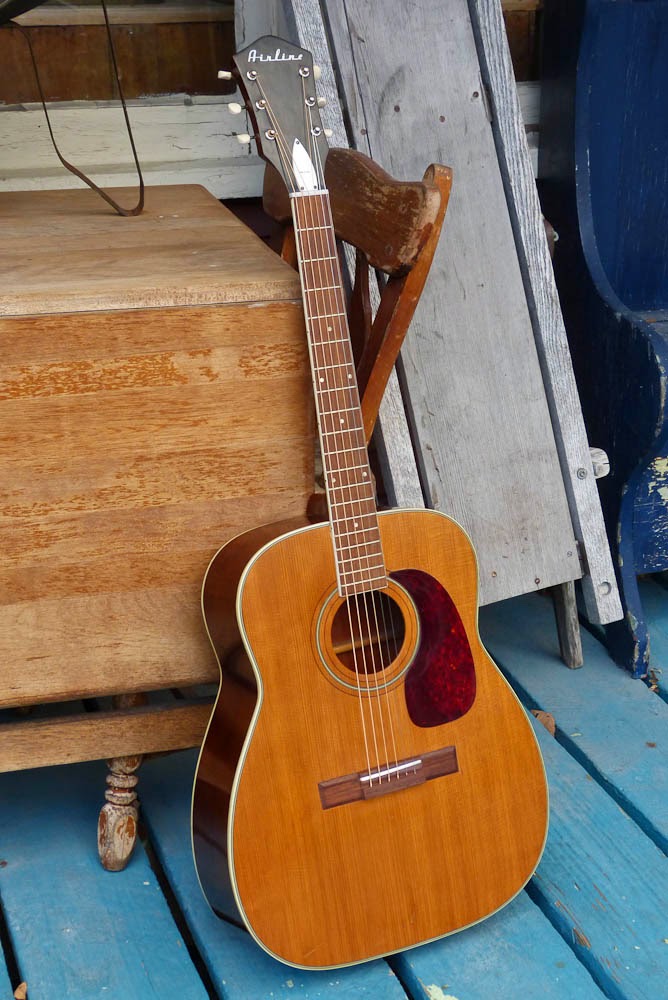c.1965 Harmony-made H633 Airline Jumbo Guitar
This is a customer's guitar and while it has an H633 designation stamped in the soundhole and Airline on the headstock this is essentially identical to a Harmony-brand H1266 model. It's a jumbo-sized dreadnought body with ladder bracing, solid spruce top, solid mahogany back and sides, mahogany neck and rosewood board and bridge. When these are setup correctly and in good health they're monstrously loud, punchy, and gutsy. That's what's making them popular again in certain hip circles as an alternative to the standard Martin/Gibson iterations of the same idea.
There's no date stamp inside but I'd guess this dates between '65 and '70.
This guitar is crack-free, clean and totally original save a new bone saddle and some replacement tuner ferrules. I gave it a neck reset, fret level/dress, and good setup and it's belting it out, now.
I also had to re-apply the original pickguard: the glue had all dried up and it practically fell off. I removed all the excess glue gunk and used double-sided pickup film to mount it instead.
During the neck reset all I had to do to remove the neck was simply unattach the fretboard extension and then use the StewMac neck removal jig (minus steam) to pop it off. This is pretty much the case for every one of these guitars I've worked on and most 50s-60s Harmony guits: the dovetail joint is always entirely failed in most cases and just a little bit of pressure in the right place will simply pop the whole thing off.
The truss-rodded neck means the thing has a slimmer, more 50s Gibson profile than your average 60s Harmony. The synthetic nut is original.
Radiused rosewood board with faux-pear dots and binding... and note the fine sideways lining to the board. I've mentioned it before but if you take a good look at radiused Harmony boards from the 30s through the 60s this lining/chatter to the surface across the grain gets more and more prevalent as the years go by. I'm assuming this is due to tool wear over time and the way they radiused these things.
The rosewood bridge is pretty nice but I'm not a fan of "top load" designs. The problem is that they have less back-angle over a low (or even standard-issue) Harmony saddle so if you need to adjust action down in the future there's not much wiggle room. If this were my guitar (and it weren't so clean) I'd be very tempted to convert it to a pin-style bridge instead to make adjustments easier.
Gorgeous mahogany, isn't it?
The original tuners work fine after a lube. Note: one bent shaft.
As the flagship flattop Harmony model at the time, H1266-style guitars have binding on top, back, and fretboard which gives them an upscale look.












Comments